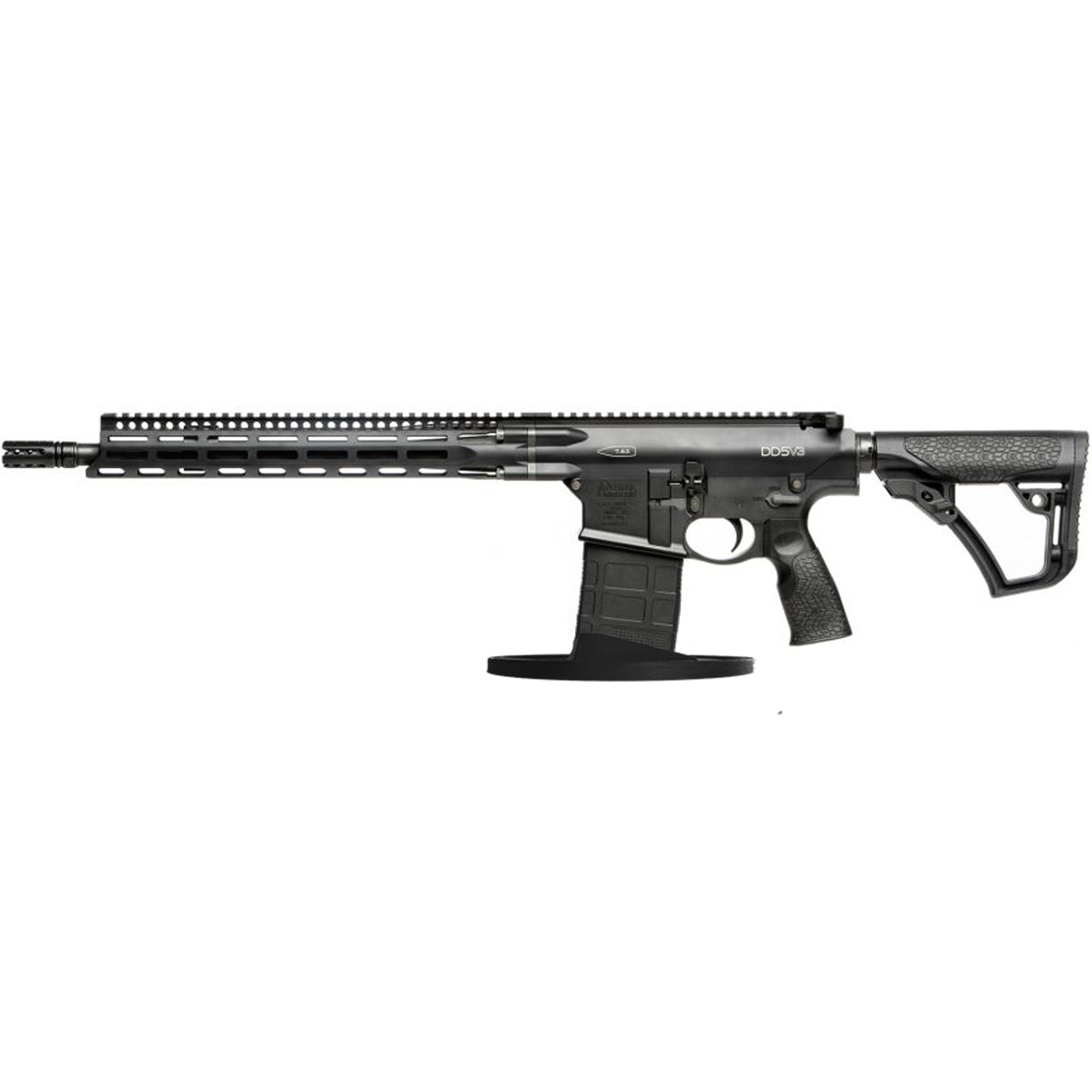
Categories:
The AR10 rifle, a precursor to the widely recognized AR15, stands as a testament to the innovation and versatility that Eugene Stoner brought to gun design in the mid-20th century. Originally developed in the 1950s by Armalite, the AR10 was crafted as a lightweight, air-cooled, gas-operated weapon chambered for 7.62x51mm NATO rounds. Its design philosophy centered around modularity and ease of use, elements that have continued to define modern iterations.
Unlike its smaller counterpart, the AR15 which fires 5.56x45mm NATO rounds, the AR10’s larger caliber allows it to excel in roles requiring greater stopping power and range. This makes it particularly favored among military forces for designated marksman roles and civilians for hunting larger game or precision shooting applications. The platform’s adaptability is one of its most celebrated features. The upper and lower receivers can be easily swapped out or modified with various components—from barrels and handguards to triggers and stocks—allowing shooters to customize their rifles according to specific needs or preferences.
This flexibility has given rise to numerous manufacturers producing parts compatible with the original design specifications. Magazines play a crucial role in any gun’s reliability and performance; thus, understanding magazine compatibility is essential for AR10 users. Unlike standardized magazines for platforms such as the M16/AR15 family, AR10 magazines can vary significantly between manufacturers due to slight differences in design specifications over time.
In recent years, Magpul’s PMAG series has emerged as a popular choice among shooters seeking reliable polymer magazines for their rifles.
Magpul PMAGs have become a ubiquitous name in the guns industry, particularly when discussing modern sporting rifles like the AR-10. These polymer magazines are celebrated for their durability, reliability, and innovative design features. Constructed from high-strength polymer, Magpul PMAGs offer significant advantages over traditional metal magazines, including resistance to rust and deformation under stress. This makes them particularly well-suited for rigorous use in various environmental conditions.
One of the standout features of Magpul PMAGs is their anti-tilt follower. This design ensures smooth feeding of ammunition into the chamber, reducing the likelihood of malfunctions that can be caused by misaligned cartridges. Additionally, many models come with a dust cover that snaps onto the top of the magazine when not in use, protecting feed lips from dirt and debris while also preventing compression during long-term storage.
Magpul PMAGs are available in multiple configurations to suit different needs and preferences. For example, they come in various capacities ranging from 10 to 25 rounds for AR-10 platforms. Some models feature transparent windows on either side of the magazine body to allow shooters to quickly assess their remaining ammunition at a glance.
Another critical aspect is their compatibility with different rifle platforms. While primarily designed for AR-style rifles like the AR-10 and AR-15, specific models may be tailored for other guns as well. However, it’s essential to verify compatibility with your particular rifle model since variations exist between manufacturers’ specifications.
In summary, Magpul PMAGs have set a high standard in magazine technology through their robust construction and thoughtful features designed to enhance reliability and user experience across various shooting scenarios.
When discussing the compatibility of AR10 rifles with Magpul PMAGs, several factors come into play that ensures a seamless and reliable performance. First and foremost, it’s essential to understand that the AR10 platform lacks the universal standardization found in its smaller counterpart, the AR15. This variance stems from different manufacturers producing proprietary versions of AR10 rifles, leading to potential discrepancies in magazine well dimensions and other components.
One primary factor is the rifle’s lower receiver design. Some AR10 rifles adhere to DPMS (Defense Procurement Manufacturing Services) patterns, while others follow Armalite designs. Each pattern has distinct specifications that can affect PMAG fitment. Magpul manufactures specific PMAG models like the M3 7.62 NATO for DPMS-patterned rifles, ensuring precise compatibility. Material quality and tolerances also play a significant role. High-quality PMAGs constructed from robust polymer materials are designed to withstand rigorous use without deforming or causing feeding issues.
However, even with premium magazines, variations in manufacturing tolerances of both the magazine and rifle can impact how well they interface. Furthermore, considering variations in ammunition types is crucial for compatibility. The internal geometry of PMAGs is optimized for standard 7.62x51mm NATO rounds but may experience feeding inconsistencies with alternative or exotic calibers unless specifically designed for them. Finally, user modifications can influence compatibility outcomes as well; enhancements such as aftermarket magwells or trigger guards might affect how securely a PMAG seats within an AR10’s receiver.
When discussing the compatibility of Magpul PMAGs with AR10 rifles, it’s essential to recognize the specific models designed to meet the demands of this robust platform. Magpul offers a range of PMAGs that cater to various preferences and requirements, ensuring that users can find a magazine suited for their AR10 rifle. The most prominent series in this context is the PMAG 20 LR/SR GEN M3 and the PMAG 25 LR/SR GEN M3.
These magazines are engineered explicitly for rifles chambered in 7.62x51mm NATO/.308 Winchester, which is standard for most AR10 variants. The GEN M3 designation signifies enhancements over previous generations, such as improved durability, reliability, and compatibility with an array of lower receivers. The PMAG 20 LR/SR GEN M3 offers a 20-round capacity, making it a practical choice for those who prioritize a more compact profile without sacrificing too much ammunition capacity.
Its robust polymer construction ensures longevity and resistance to impact, while its anti-tilt follower promotes reliable feeding under demanding conditions. For users who prefer higher capacity options, the PMAG 25 LR/SR GEN M3 provides a 25-round capability. This model retains all the durability features of its smaller counterpart but extends operational readiness by allowing more rounds before needing a reload. The additional five rounds can be advantageous in extended shooting sessions or tactical scenarios where every round counts.
Both models incorporate features such as aggressive texturing for better grip and handling, easy disassembly for maintenance purposes, and compatibility with various ammunition types thanks to their self-lubricating follower design. They also support last-round bolt hold-open functionality on compatible rifles—an essential feature for many shooters seeking quick reloads.
When it comes to ensuring your AR10 rifle functions seamlessly with Magpul PMAGs, understanding proper installation and fitment is essential. The compatibility between AR10 platforms and PMAGs largely hinges on the design specifications of both the rifle and the magazine. Here’s an in-depth look at how to achieve optimal performance.
Firstly, confirm that you have the correct PMAG model for your specific AR10 platform. Magpul manufactures several variations tailored for different AR10 designs, such as those built on DPMS or Armalite patterns. Using an incompatible PMAG can lead to feeding issues or damage.
Before inserting a PMAG into your AR10, visually inspect both the magazine and the magwell for any obstructions or debris that could impede smooth insertion. The next step involves a simple yet crucial process: insert the magazine into the magwell with firm pressure until you hear or feel it click into place. This audible click signifies that the magazine catch has engaged properly.
Once inserted, perform a series of checks to ensure proper fitment. Tug gently on the magazine to confirm it is securely latched without excessive wobble, which could affect reliability during firing sequences. Engage in manual cycling by pulling back and releasing the charging handle several times; this ensures smooth feeding from the PMAG into the chamber.
If you encounter resistance or irregularities during these checks, consider inspecting both components again for wear or manufacturing variances. Occasionally, minor adjustments such as filing down rough edges on either component may be necessary to achieve a perfect fit.
By adhering to these guidelines, you can maximize reliability and performance when using Magpul PMAGs with your AR10 rifle—ensuring every shot counts when it matters most.
The performance and reliability of Magpul PMAGs in AR10 platforms have garnered significant attention from gun enthusiasts and professionals alike. Known for their rugged construction and advanced polymer materials, PMAGs are designed to withstand the harsh conditions often encountered in tactical environments. When paired with AR10 rifles, these magazines demonstrate exceptional durability, resisting impacts, abrasions, and environmental stressors such as extreme temperatures and moisture.
One of the key attributes contributing to the reliability of PMAGs is their anti-tilt follower design. This feature ensures smooth feeding of ammunition into the chamber, reducing the likelihood of malfunctions that could compromise performance during critical moments. The precision-molded geometry of PMAGs also plays a crucial role in maintaining consistent internal dimensions, which translates to reliable cycling and ejection across various AR10 models.
In terms of performance under sustained fire conditions, PMAGs excel due to their heat-resistant properties. The high-quality polymer used in their construction remains stable even after prolonged firing sessions, preventing warping or deformation that could lead to feeding issues. Additionally, the self-lubricating properties of the material contribute to reduced friction within the magazine well and during ammunition feeding cycles.
The compatibility between Magpul PMAGs and AR10 platforms extends beyond mere functionality; it also encompasses ease of use. With an ergonomic design featuring aggressive texturing for a secure grip, reloading becomes more efficient even under stress or adverse conditions. Furthermore, many users appreciate the inclusion of dust covers with PMAGs that protect loaded magazines from dirt and debris when not in use.
Ultimately, Magpul’s commitment to innovation and quality assurance has positioned PMAGs as a trusted choice for enhancing both performance and reliability in AR10 rifle systems.
When dealing with PMAG compatibility issues in your AR-10 rifle, the root of the problem often lies in subtle differences between rifle models and the magazines themselves. One common issue is feeding problems, where rounds may not chamber correctly. This can often be attributed to variations in magazine dimensions or seating depth, which might not perfectly align with your rifle’s mag well.
Ensuring that your PMAG is fully seated and locked into place can sometimes resolve this issue.
Another frequent concern is bolt catch engagement problems. The bolt catch might fail to lock back on an empty magazine due to slight discrepancies in the follower design of the PMAG compared to other types of magazines. This issue can sometimes be rectified by inspecting and adjusting the bolt catch mechanism for proper function or by trying a different generation or model of PMAG that might have a slightly different follower design.
Ejection issues can also arise, where spent casings fail to clear the ejection port smoothly. This problem could stem from an overly tight fit between the magazine and mag well, causing excessive friction during cycling. Lightly sanding down any rough edges on either component or lubricating these contact points can help mitigate this issue.
Lastly, some users experience difficulty inserting a fully loaded PMAG into their AR-10 when the bolt is closed. This challenge typically results from increased pressure against the rounds within a fully loaded magazine. To address this, try downloading your PMAG by one or two rounds to reduce tension and facilitate easier insertion.
In summary, while Magpul’s PMAGs are designed for reliability and durability, minor compatibility tweaks may be necessary depending on your specific AR-10 configuration.
When it comes to user reviews and experiences with AR10 rifle Magpul PMAGs, opinions are overwhelmingly positive, reflecting the high regard in which these magazines are held by guns enthusiasts. One of the most frequently mentioned advantages is their reliability. Users often recount how Magpul PMAGs have performed flawlessly through thousands of rounds, even under harsh conditions. This consistent reliability is crucial for many, especially those who rely on their AR10 rifles for professional use or personal defense.
Durability is another key feature that garners praise. The robust polymer construction of Magpul PMAGs means they can withstand rough handling, drops, and adverse weather without compromising functionality. Many users appreciate this resilience compared to traditional metal magazines which can dent or rust over time.
The design and ergonomics of Magpul PMAGs also receive commendations. The textured surface provides a secure grip even when wearing gloves or in wet conditions. Additionally, the easy-to-remove floor plate simplifies maintenance and cleaning—a factor that many shooters find beneficial for long-term care.
Compatibility with various AR10 platforms is another highlight noted by users. While some magazines struggle with fitment issues across different manufacturers’ rifles, Magpul’s attention to detail ensures their PMAGs work seamlessly with a wide range of AR10 models.
However, not all feedback is universally positive; a few users report occasional feeding issues or tight fits in certain receivers. Despite these isolated incidents, the consensus remains largely favorable.
In summary, user experiences suggest that AR10 rifle owners find Magpul PMAGs to be reliable, durable, and well-designed accessories that enhance their shooting experience significantly.
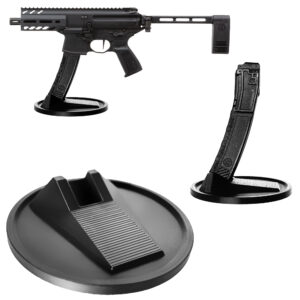
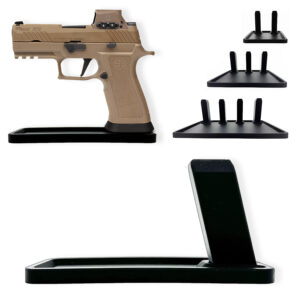
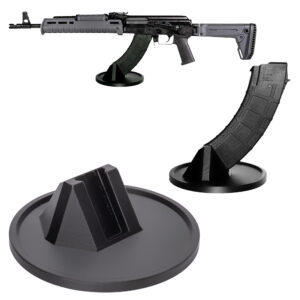


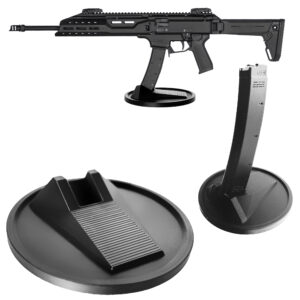
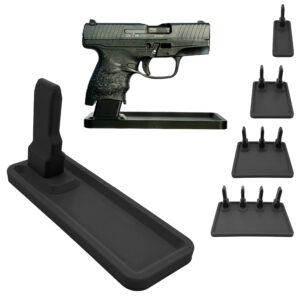

Colt
Colt M4 Carbine
Colt LE6920
Colt AR-15 A4
Daniel Defense
DDM4 V7
DDM4 V9
DDM4 V11
DDM4 ISR (Integrally Suppressed Rifle)
Smith & Wesson (S&W)
M&P15 Sport II
M&P15 Tactical
M&P15T
Bravo Company Manufacturing (BCM)
BCM Recce-16
BCM Recce-14
BCM MCMR Series
Aero Precision
M4E1 Series
AC-15
AR15 Pistol (Various Configurations)
Ruger
Ruger AR-556
Ruger SR-556
Ruger AR-556 MPR (Multi-Purpose Rifle)
Springfield Armory
Saint Victor
Saint Edge
Saint AR-15
PSA (Palmetto State Armory)
PSA PA-15
PSA AR-V
PSA Jakl (AR Pistol)
FN America
FN 15 Tactical Carbine
FN 15 Patrol
FN 15 DMR
Wilson Combat
Recon Tactical
Super Sniper
Protector Carbine
SIG Sauer
SIG M400 Tread
SIG M400 Elite
SIG M400 SDI
LWRC International
IC DI (Direct Impingement)
IC SPR
IC A5
Bushmaster Guns
XM-15 QRC
Bushmaster MOE
XM-15 Patrolman
Rock River Arms
LAR-15 Entry Tactical
LAR-15 Predator
LAR-15 Elite Comp
Stag Arms
Stag 15 Tactical
Stag 15L (Left-Handed Models)
Stag 15 Valkyrie
Noveske Rifleworks
Noveske Gen 4 N4
Noveske Space Invader (AR Pistol)
Noveske Recon
Anderson Manufacturing
AM-15 Optic Ready
AM-15 M4 Carbine
AM-15 Precision Rifle
Adams Arms
AA-15 Piston Rifle
P2 AARS (Adams Arms Rifle Series)
Black Rain Ordnance
SPEC15 Series
BRO Predator
Fallout 15
Diamondback Guns
DB15 Series
DB15CCMLB
DB15EB
Del-Ton Inc.
DTI-15
Del-Ton Echo 316H
Sierra 316M
Windham Weaponry
Windham SRC
Windham VEX-SS
Windham RMCS-4 (Caliber Conversion System)
Christensen Arms
CA-15 G2
CA-15 Recon
CA-15 Titanium Edition
Patriot Ordnance Factory (POF-USA)
Renegade Plus
P415 Edge
Revolution DI
LaRue Tactical
PredatAR
OBR (Optimized Battle Rifle)
LaRue Stealth 2.0
Battle Arms Development
Workhorse Patrol Carbine
BAD556-LW (Lightweight)
Authority Elite Rifle
Faxon Guns
Ascent AR-15
FX-19 (AR Pistol)
Streamline Ultralight Series
KE Arms
KE-15 SLT (Super Lightweight Tactical)
KE-15 Scout Carbine
Primary Weapons Systems (PWS)
MK1 MOD 2-M
MK116 PRO
MK107 (Piston AR Pistol)
ZEV Technologies
ZEV Core Elite Rifle
ZEV AR15 Billet Rifles
Franklin Armory
BFSIII AR-C1
Militia Model
F17-L (Chambered in .17 WSM)
Seekins Precision
SP15 DMR
NX15 Skeletonized Rifle
Havak Bravo
Aero Precision (Additional Models)
EPC-9 (Pistol Caliber ARs)
VG6 AR Rifles
Barrett Guns
REC7 DI
REC7 Gen II
CMMG
MK4 RCE
Resolute 300
Banshee (AR Pistol)
DPMS Panther Arms
Panther Oracle
Panther LR-308
H&K (Heckler & Koch)
HK MR556A1
HK416 (Military Variant)
Rock Island Armory (Armscor)
VR-80 Tactical AR (Shotgun AR Platform)
Troy Industries
Troy SPC-A3
Troy PAR (Pump Action AR)
Wilson Tactical
Tactical Recon AR
Protector Series
F1 Guns
FDR-15 Skeletonized Rifle
BDRx-15 Series
Juggernaut Tactical
JT-15
JT-10 Precision Rifle
AeroSurplus
Surplus AR-15 Rifles (Budget Models)
Thunder Tactical
AR-15 Basic Carbine
Tactical Builder Sets
Radical Guns
RF-15
Forged AR-Series
Dark Storm Industries
DS-15 Featureless Rifles
DS-10 Typhoon
DRD Tactical
Paratus
Aptus AR Rifles
Bear Creek Arsenal
BCA-15
AR Complete Upper Builds
Aero Survival Rifles (ASI)
ASR Tactical Series
Tactical Edge
WARFIGHTER Series
AR-15 Lightweight Rifles
Lone Star Armory
TX15 DMR
TX15 Carbine
HERA Arms
HERA H7
HERA AR-15 Lower Builds
IWI (Israeli Weapon Industries)
Zion-15
DRD Tactical
Tactical Modular Rifles
Quick-Takedown Rifles
V Seven Weapons
1776 Rifle
Hyperlite Rifle
Core Rifle Systems
Core15 Tac III
Core15 Patrol Rifle
Armalite (Original AR-15 Creator)
M15 Tactical
M15 A4 Carbine
DEF15 (Defensive Sporting Rifle Series)
PSA (Palmetto State Armory Additional Models)
PSAK-47 Hybrid (AR-AK Style Hybrid)
PSA Dagger (Pistol Caliber Configurations)
Odin Works
OTR-15
Odin Recon Rifle
Maxim Defense
MDX-508 PDX (Compact AR Pistol)
MDX-510 Rifle